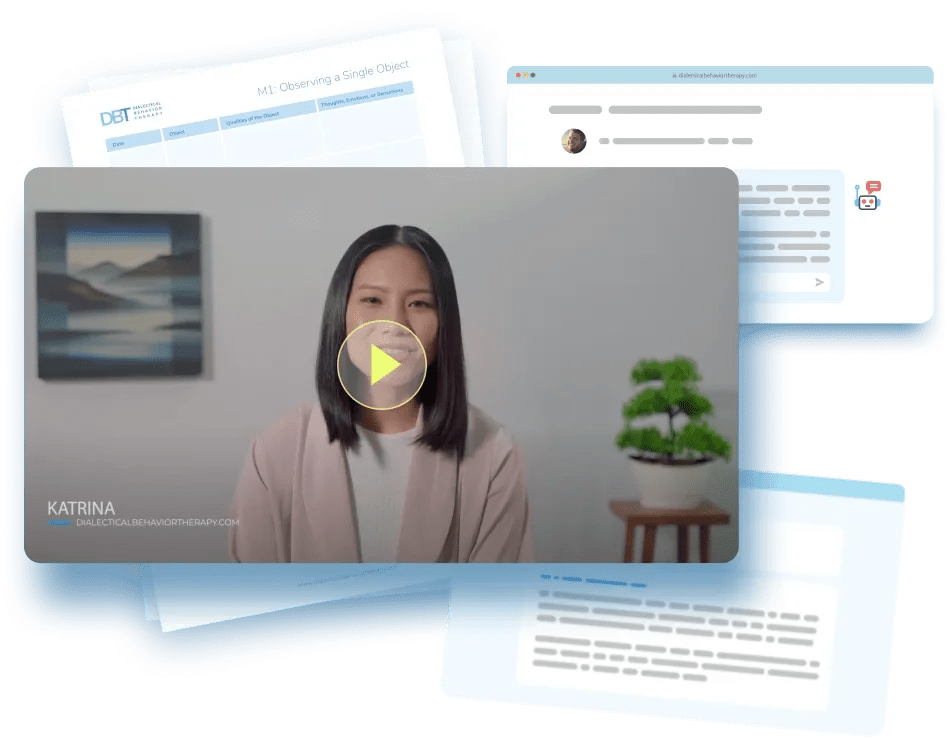OU1: Leaves on a Stream
Virtual Coach
Work step-by-step through the Open Up exercise with the virtual coach.
Introduction
Racing thoughts stick like burrs when we treat them as urgent alarms (“I have to fix this right now”). Leaves on a Stream—a classic Acceptance & Commitment Therapy (ACT) defusion drill—teaches you to watch mental events drift past, the way you’d watch leaves float down a creek. Originating in the early ACT manuals (Hayes, Strosahl & Wilson, 1999) and validated across anxiety, depression, and chronic-pain trials, defusion lowers reactivity by shifting thoughts from commands to mere data.
Bottom line: When the mind shouts, “Panic!” this exercise replies, “Thanks, mind—there goes another leaf.”
Instructions
Goal: Practice Leaves on a Stream once a day for 1 week, then as needed before ruminative or high-stress moments.
Session length: ≈ 5 min Debrief: 1 min immediately afterward.
Step 1: Settle
Sit upright with your eyes closed or half-open. Take two slow breaths.
Rest your palms on your thighs for a simple body anchor.
Step 2: Imagine the Stream
Picture a slow, clear creek with leaves drifting by on the surface.
Use real river sounds if visualization feels flat.
Step 3: Label & Place
When a thought pops up, name it—like “worry” or “planning”—and place it on a leaf.
Whisper, “I’m having the thought that I’ll bomb...”
Step 4: Watch & Return
Let the leaf float away. If your mind wanders, place “wandering” on a leaf and guide your attention back to the stream.
Treat each catch as success—the moment you notice a thought, it’s already loosened its grip.
Step 5: Close & Note
When the timer chimes, open your eyes. Rate your distress 0–10 and jot one word about the shift.
Track your scores for a week to see patterns.
Worksheet & Virtual Coach
FAQs
I can’t picture a stream—am I doomed?
No. Swap in clouds across the sky, cars on a road, or even text messages sliding off a screen. The movement metaphor matters, not the scenery.
Thoughts come too fast to label individually.
Group them (“a bundle of worries”) and send the bundle off on one leaf. Quantity can outpace precision—let it.
Can I push bad thoughts away instead?
Pushing = fusion. The skill is to allow thoughts while loosening their grip. Ironically, allowing them often quiets them faster.
How long until it “works”?
Many people feel a drop in distress within one or two sessions; sustained change comes with daily reps for 1-2 weeks.
Disclaimer
If you have any behavioral health questions or concerns, please talk to your healthcare or mental health care provider. This article is supported by peer-reviewed research and information drawn from behavioral health societies and governmental agencies. However, it is not a substitute for professional behavioral health advice, diagnosis, or treatment.

